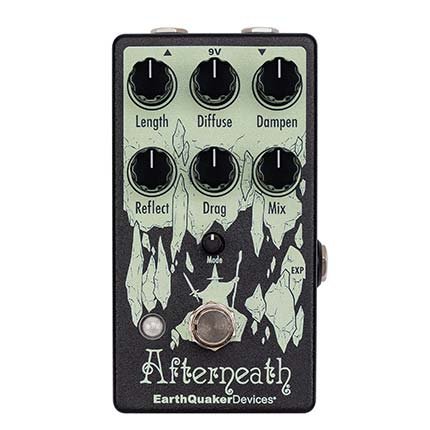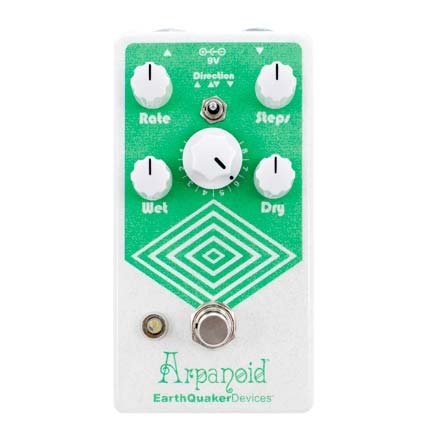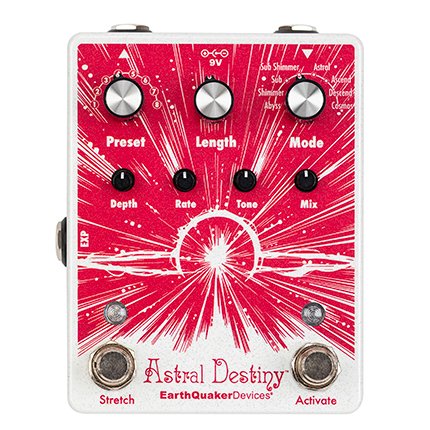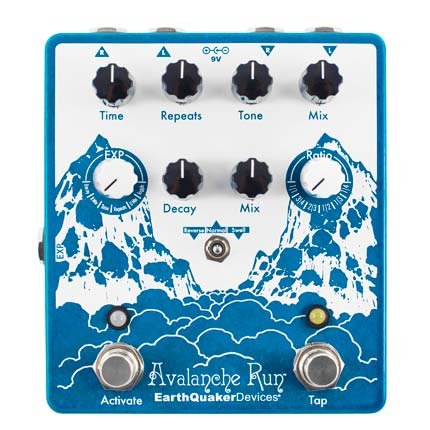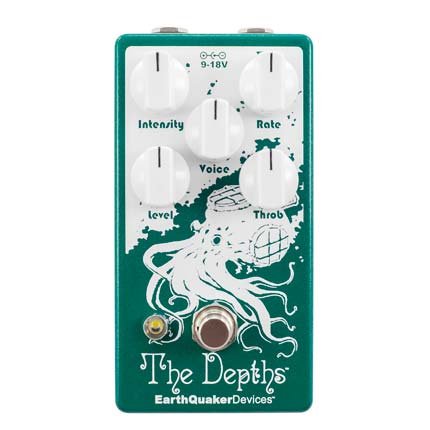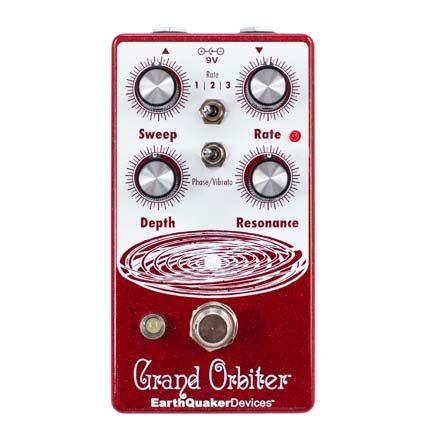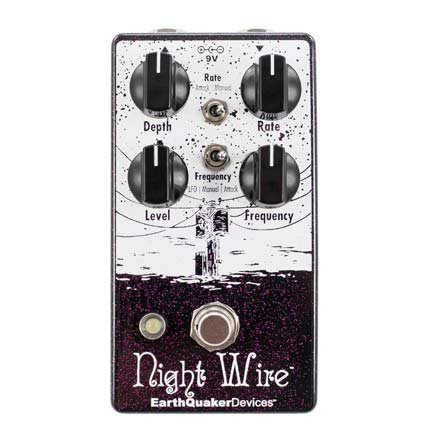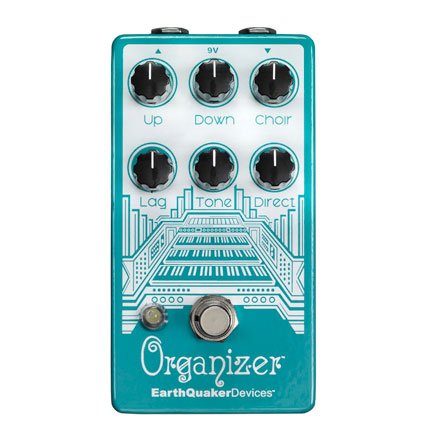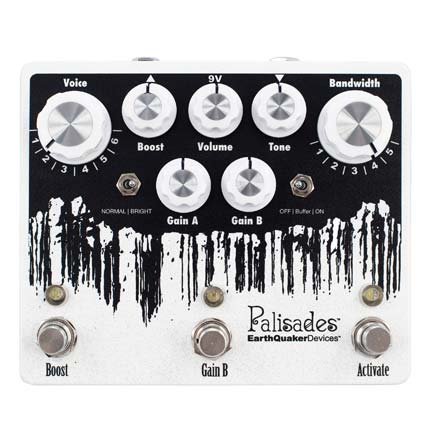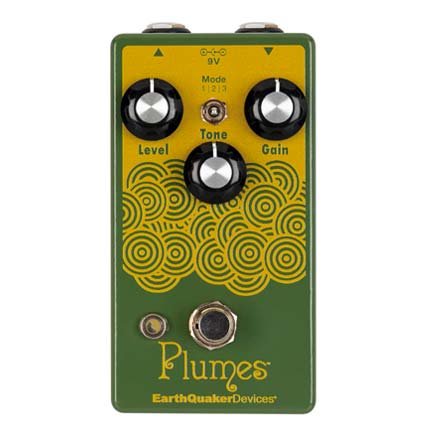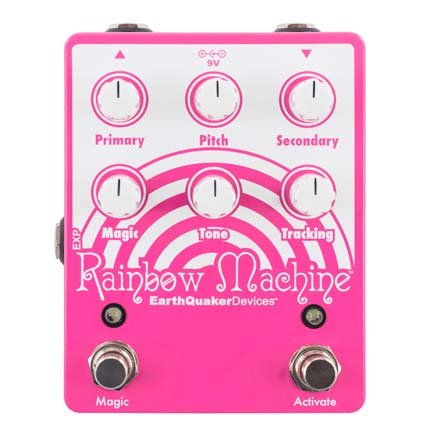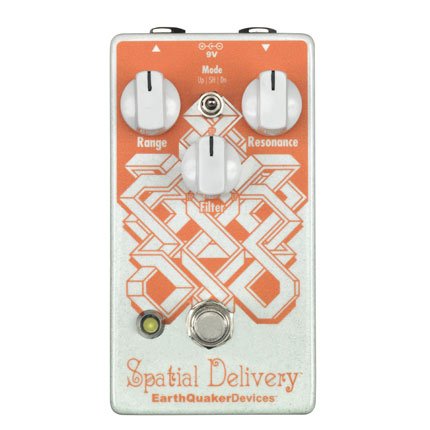Sweetwater Electronic Music Production Event
Malcolm X Abram
Our friends at Sweetwater.com are hosting an Electronic Music Production Event from May 10 – May 25. They asked us to help them illustrate how effects pedals can be used as outboard gear with electronic instruments and in-the-box productions by remixing the short, groovy ditty “Rockpile Rumble.” Here’s our contribution. Please go to Sweetwater’s blog to find out how they did their very different mix of the same tune.
In the laptop-driven and portable studio world in which we currently exist, many D.I.Y. and independent artists are content to use the multitudes of software plugins available when recording. Some folks may even assume outboard gear is just for professional-grade studios and big-time producers. But if you're a musician, guitarist, bassist, or just a pedal nerd (we love ya!), you likely have at least a small arsenal of pedals that you could be using with your in-the-box productions. Likewise, some analog and soft-synth players may not see the value in using pedals as outboard gear. But if you know your pedals and their capabilities well, why not throw some of that analog delay on your cool synth melody or dirty up your square wave bass line with some good ol' stompbox fuzz. Naturally, EarthQuaker Devices pedals are great for this purpose.
Jake Jenkins, our good friend, and synth maestro at Sweetwater, asked us to help illustrate how useful and just good fun it can be to use pedals as outboard gear focusing on synthesizer-based music. So, Jake sent us a short, groovy synth-based track for us to play with, and play with it we did. The track is called "Rockpile Rumble" and, for us, conjures mental images of a scene from an 80s action movie. Perhaps our heroes are in their cool-ass classic muscle cars driving through the underbelly of "The City" looking for their favorite snitch, or are on their way to a showdown with the Big Bad Boss. Or something like that.
Anyway, just so you know our starting point, here's the original raw version of "Rockpile Rumble" with minimal EQ and some limiting on the Master Bus. So, put on your Ray-Bans, step into your loafers (no socks, of course), push up the sleeves of your bright, pastel-colored, double-breasted linen suit jacket, and get ready to r-r-r-rumble!
Quick, take off your Ray-Bans and say something cool into an imaginary movie camera! OK, now, let's turn this clean, digitally pristine, and carefully constructed ditty into something dirty and low-fi, shall we?
METHOD OF OUR MADNESS
Here at the Upstairs Bedroom Sound Labs, our gear setup is relatively simple and consumer friendly. Since Jake sent us the raw stems, we first have to get the sounds out of our DAW, Harrison Mixbus 7 32C, then out of our audio interface, the dependable Focusrite 4i4. Next, we have to send the raw signal into our pedalboard and then send the results back into our interface and DAW. We won't go too deep into the nuts and bolts of the process since each DAW and interface are different. Check your various manuals to see how your DAW and interface interact to get it done. But most modern DAWs should have suitable routing options, and if your interface has multiple outs, you should be good to go. In our case, we used inserts to send the original signal out of the 4i4's third output, directly into our pedalboard, and then back into input one of the interface and recorded the affected signal onto a new track. Pay attention to your incoming levels when sending pedals into your interface because it's easy to clip your input, and you probably don't want that to happen.
SWEETQUAKERS ASSEMBLE!
As part of this team-up, both Jake and the lab-coated team at the UBSL took a stab at remixing the basic version of "Rockpile Rumble," and our results highlight a couple of the many possible approaches. Jake took the tasteful, subtle, and augmentative approach. He gave the hi-hats a light frosting of EQD's Grand Orbiter Phase Machine and a sprinkling of the Korg SDD-3000 digital delay. Also, Jake lightly added the Boss Super Chorus to some of the melodic elements and used the EQD Data Corrupter, which gloriously obliterates any signal you feed it on the main melody. By contrast, we decided to go big, so there isn't just a bit of effects frosting. Instead, we slathered them on with a heaping helping of sprinkles and a bucket of sonic brown gravy. Hopefully, the different styles will show the wide range of possibilities, from adding a little depth and space to your already groovy tracks or transforming the entire piece into something else.
OK, enough with the food metaphors. Let’s get into it, shall we? As we go through several of the stems, we'll offer details and reasoning for the pedals used and give you audio clips comparing the original, raw files with our gussied-up remixes. Also, the pedals are listed in the order of the signal chain used on each stem.
AFFECTING EFFECTS
Behringer Odyssey (Arpeggio) - Organizer, Aqueduct, Pyramids, Rainbow Machine, Afterneath
This cool arpeggio is the first sound you hear, and we decided to make it warbly and weird. The Organizer polyphonic organ emulator adds more of the high octave plus the choir to fill out the sound, and the Rainbow Machine polyphonic pitch mesmerizer adds a bit more wobble. The Pyramids stereo flanger is set relatively subtly for a bit more movement, the Aqueduct vibrato adds even more wobble, and the Afterneath reverb is at the end for added depth.
Behringer Odyssey (low arpeggio) - Hizumitas, Sea Machine
We've got the wobble, so let's add some dirt via the Hizumitas Fuzz Sustainar with the Sustain knob (distortion level) set at noon. Some chorus from the Sea Machine super chorus smooths out the rough fuzzy edges a touch, so you still get the staccato feel of the arpeggio.
Behringer Pro-1 (bass line) - Hizumitas, Grand Orbiter, Tone Job, Rainbow Machine, Pyramids, Astral Destiny
We wanted the already dirty square bass to become darned filthy. So we tightened it up a bit with the Warden optical compressor and fed that through a touch of the Hizumitas into the Grand Orbiter set at a very slow rate for added movement. Then the Tone Job EQ and boost were added to further push the lower mid-range of the notes, threw on the Rainbow Machine to thicken the sound, and added the Pyramids Stereo Flanger for that familiar "whoosh!" and even more movement. Then we sent it all to the Astral Destiny Reverb and used the Flexi-switch Stretch feature during some of those long bass notes at the breakdown and the very last note for some drama!
Yamaha RX5 Drum Machine - KICK - Tone Job, Palisades, Rainbow Machine
There's nothing too fancy happening here. We took the basic kick sound and added the Palisades mega ultimate overdrive for some dirt and the Rainbow Machine, honestly, just because.
SNARE - Tone Job, Rainbow Machine, Organizer, Arpanoid, Afterneath
We wanted the snare to be odd, so we used the Tone Job to make the transient really snap so you hear that near clap sound when it hits. Then some Rainbow Machine with the Pitch knob above noon and the Primary knob adding an octave above. Then into the Organizer, also with the up octave mixed in. Then we added the Arpanoid Polyphonic Pitch Arpeggiator with a fast rate and minimal steps. Together, they create that weird rising note and distortion.
HAT - The Warden, Tone Job, Pyramids, Night Wire
This one didn't quite come out as we hoped. Mostly it's just thick. But if you listen closely, you can hear a bit of a wah sound on the hat chokes courtesy of the Night Wire harmonic tremolo.
MID AND LOW TOM - Tone Job, Rainbow Machine, Organizer
There are only a few hits, so we kept it simple and sent the toms to the Tone Job for a bit of midrange boost, then into the Rainbow Machine for that slight digital stutter tail after the hits. Finally, the Organizer adds just a hint of an upper octave.
Roland Alpha Juno 2 - Afterneath, Tone Job, Rainbow, Pyramids, Aqueduct, Organizer, Astral Destiny, Avalanche Run
We wanted these supportive chords to provide some seasick harmonic atmosphere, so we first sent them through the Afterneath set like a traditional spring reverb. Next comes the Tone Job for some mids and to remove a bit of low-end mud and then through the Rainbow Machine to fatten them before hitting the Pyramids. The seasick dragging sound comes from the Aqueduct, set to envelope pitch mode, which reacts to the signal's attack. In this mode, the Depth knob acts as a wet/dry mix, and the Rate knob sets the sensitivity. We cranked the Rate, which caused the pitch to drag. The Organizer has both the Up octave and Down octave on with just a touch of Lag. The Stretch footswitch on the Astral Destiny modulated reverb pedal is used mainly for those dramatic pitch rises and falls near the end of the piece, while the Avalanche Run stereo reverb and delay adds a bit of delay and reverb with a volume swell.
Roland Alpha Juno 2 - The Warden, Grand Orbiter, Sea Machine, Astral Destiny, Avalanche Run
This melody is doubled on a different synth, so for the Roland Juno stem on the left, we've compressed it a bit with The Warden to sharpen it. We then sent it to the Sea Machine for some added body before heading straight into the Astral Destiny set in the Astral mode, which adds an octave above and below combined with a regeneration tail to fill it out a bit harmonically. Then, lastly, the Avalanche Run with the tape delay because rhythmic delays are just cool.
Moog Grandmother - The Warden, Palisades, Pyramids, Organizer, The Depths, Avalanche Run
We wanted to give the main melody more grit and flesh out the harmony. First, the Warden sharpens the attack, followed by a dash of dirt from the Palisades and then a bit of Pyramids flanger. Then, since we put the octave up and down on the reverb tails of the Melody in the left speaker, we decided to add more melody for the right side by setting the Organizer to just the lower octave. Then we added the Depths optical vibrato with the Voice knob at full, quite a bit of the Throb knob to keep things moving, and set the Avalanche Run to Swell mode.
Moog Grandmother - The Warden, Tone Job, Spatial Delivery, Plumes, Sea Machine, Aqueduct, Arpanoid, Astral Destiny
We loved Jake's use of the Data Corrupter on the lead line, so, of course, we had to make it dirtier. Next, we've got the Warden adding some sustain and the Tone Job to take out a little bottom end and push some mids and treble for the Spatial Delivery envelope filter to play with, giving us that wah sound. The Plumes overdrive adds the grit, and the Sea Machine smooths that out a little while the Aqueduct is set on Ramp mode with a fast rate and low depth. Finally, it all hits the Arpanoid for that slightly undulating lower octave at a high rate with the Step knob set low to keep it all tight. Finally, the Astral Destiny rounds it out with some basic reverb on the Astral setting.
Here's the final mix of "Rockpile Rumble (EQD Rainbow Sprinkles & Gravy Mix)."
And if you would like to play A vs. B, here's a taste of Jake's mix.
If you’re wondering where all the wacky stereo panning came from, we used the Waves Brauer Motion Plug-in. It’s a hoot!
Go to the Sweetwater Blog page to hear the rest of Jake's mix and read his thorough walkthrough to discover why and how he made his version.
So, there you have it. Pedals can be your outboard gear buddies too, and help to widen your options when it comes time to record your awesome tracks.
Malcolm X Abram is a recovering reporter and music writer and a proud 40 year guitar noodler. He lives, works and plays in the bucolic dreamland of Akron, Ohio in an old house with two dogs who don’t really like each other and way too many spiders.


